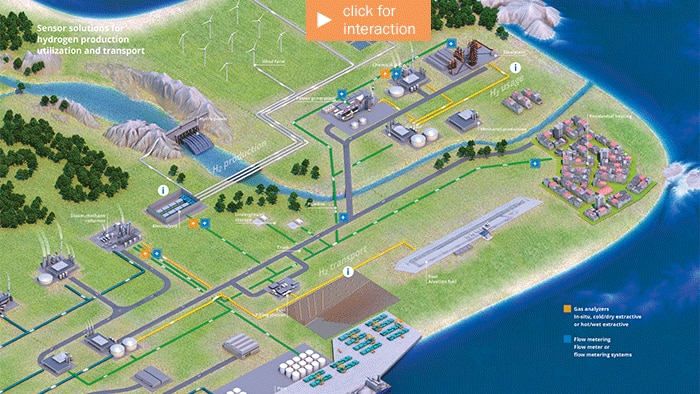Sensor solutions for clean industries
Environmentally-friendly hydrogen – an important energy carrier
The reduction of environmentally harmful emissions, especially the reduction of carbon dioxide (CO2), is a central concern of climate policy. Energy from solar, wind, and hydropower, among others, must be available on a consistent basis to make a decisive contribution to decarbonization. However, providing green power on demand often creates challenges for energy providers because they must reliably balance the continuous demand with fluctuating availability. Hydrogen produced without CO2 is an ideal way to achieve this crucial goal.
Range of services
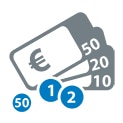
Fiscal volume measurement
Fiscal volume measurement of hydrogen is gaining importance since the upscaling of hydrogen production is increasing concurrently with the demands for measurement accuracy. Furthermore, correct quantity recording at each individual point of transfer is also essential for billing and is the foundation for the acceptance and success of hydrogen in the economy. SICK is working together with partners from metrology and industry to provide customized solutions for hydrogen gas flow measurement.

Efficient process
In order to reduce the total costs of the end product and thus accelerate the launch time, measurements are necessary in a wide variety of process steps along the entire value chain. Sensor solutions are effective as an integral part of efficiency control.

Quality control
When it comes to hydrogen, purity is of major importance. Among other things, contaminated hydrogen may contain sulfur components, ammonia or hydrocarbons in various mixtures and concentrations. If untested, hydrogen is not equally suitable for every use. Impurities can cause irreversible damage to fuel cells in particular in just a short time. To counteract this, the quality of hydrogen must be determined. SICK has the knowledge needed to do this.
Sensor solutions from SICK
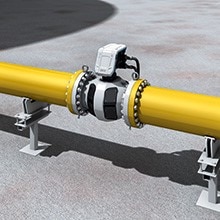
Flow measurement for transfer and process applications
Hydrogen changes ownership several times from production to the end consumer. The quantity of gas at each transfer area must be accurately determined for billing purposes. Up to 10% hydrogen is already being fed into natural gas networks. The admixture can also reach higher concentrations. The points of transfer are located both among gas grid operators and along the supply chain from operating entities of electrolysis plants (H2 producers) and grid operators to the end consumer. Ultrasonic gas flow meters provide impressive measurement accuracy and long-term stability under all operating conditions. Pressure influences are corrected automatically. The ultrasonic signal can be used for additional gas composition information. The FLOWSIC600, FLOWSIC600-XT and FLOWSIC500 device families ensure an optimal performance spectrum.
For admixture of hydrogen
For 100% hydrogen
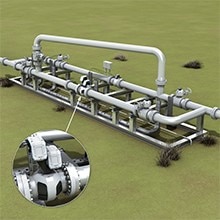
Turnkey flow metering systems
The FLOWSKID600 flow metering system from SICK offers a complete turnkey solution which fulfills all requirements for safe and stable gas flow measurement. The system provides highly accurate measurement data and can be flexibly configured. The FLOWSIC600 or FLOWSIC600-XT ultrasonic gas flow meter is the heart of the metering skid and ensures system reliability. The metering skid can be equipped with measurement devices such as gas analyzers, gas chromatographs or monitoring computers for individualized adaptation. The system is manufactured according to ISO standards and meets all current quality requirements according to DIN, ANSI and ASME standards. This means each installed solution complies with the respective local regulations and requirements.
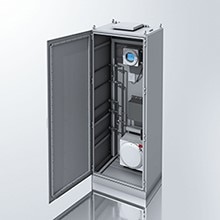
Concentration measurement
The concentration measurement of hydrogen is as an important parameter relevant for various application areas such as the feed of H2 into the existing natural gas grid. With such an admixture, it must be ensured that specified concentration limits are not exceeded to prevent damage the existing technology of pipeline networks. Concentration measurements are also relevant to safety when monitoring ambient air in electrolysis plants. The concentration value must not exceed the critical value (LEL) to avoid explosion hazards. Concentration measurements are also essential for control purposes when hydrogen is used in turbines, engines and combustion plants. SICK offers a range of gas analyzers for any use scenario.
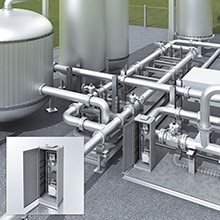
Quality measurements: Analysis of purity and contaminants
Contaminated hydrogen can negatively affect the service life of fuel cells, for example. The degree of contamination depends heavily on how the hydrogen is produced. Depending on the requirements, different technologies with their typical measurement advantages can be used for quality inspection. Thanks to its wide range of technologies and gas analyzers, SICK is able to provide the right measurement solution for important testing tasks.

Hydrogen production
Hydrogen can be produced using various processes. Steam methane reforming is an established method as an alternative to Co2-free water electrolysis. SICK offers extractive gas analyzers such as the S700 and the GMS800 for measuring methane (CH₄) and carbon monoxide (CO) to monitor the steam reformer and control the downstream shift converter. To make sure this manufacturing process – like electrolysis – also remains CO2-free, the released carbon dioxide can be captured and stored or used for other chemical processes. With its measurement solutions, SICK captures, utilizes and stores CO2 along the carbon capture path.
Efficient and cost-effective production of green hydrogen is essential for accelerating the shift from fossil to renewable energy. SICK supports this effort with customized sensor technology at many points of measurement and is continuously working on the development of technologies for the future of hydrogen.
